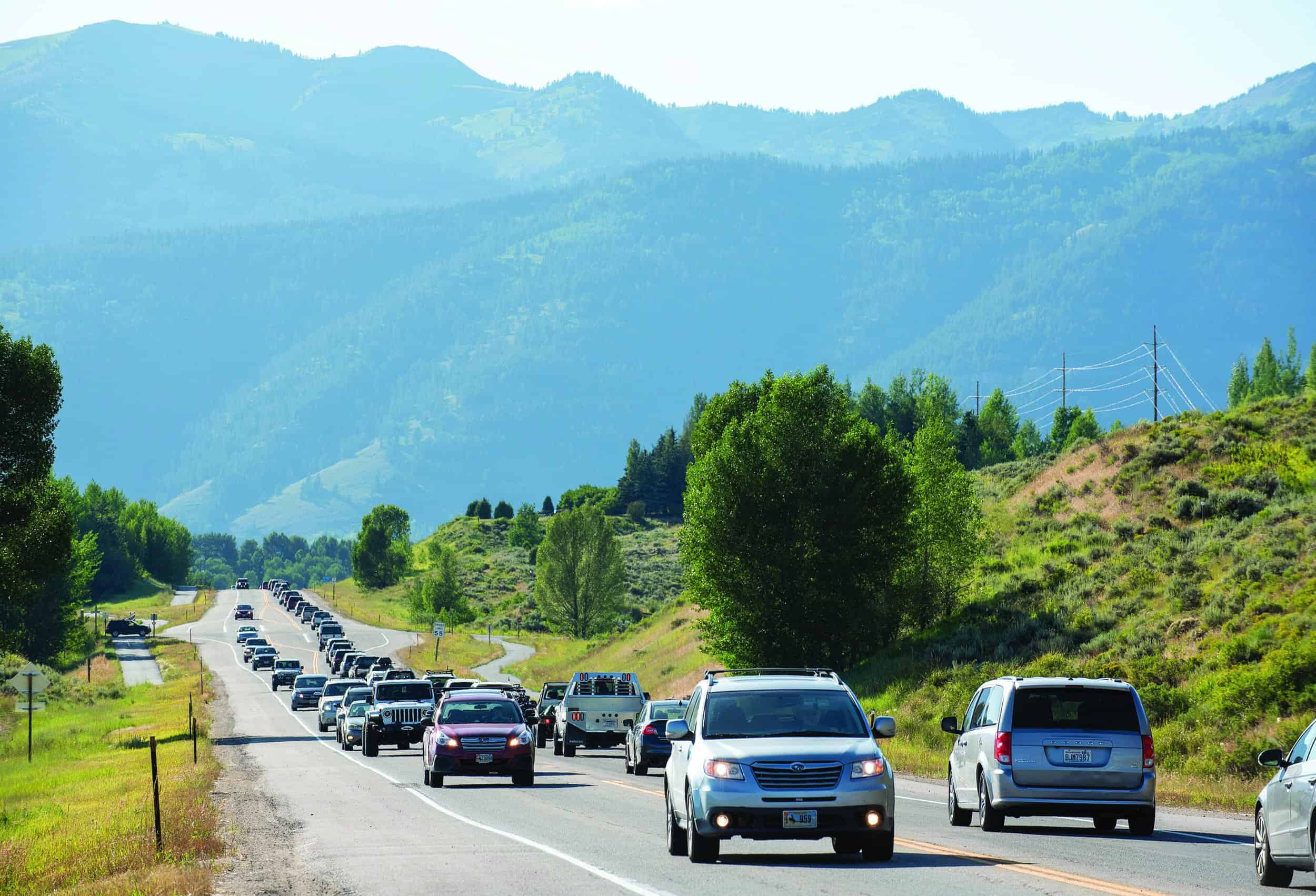Read The
Current Issue
BRADLY J. BONER
Jackson Hole is a gorgeous, unique , and wild place loved by visitors from around the world. Can we keep it from being loved to death?
// By Molly Absolon
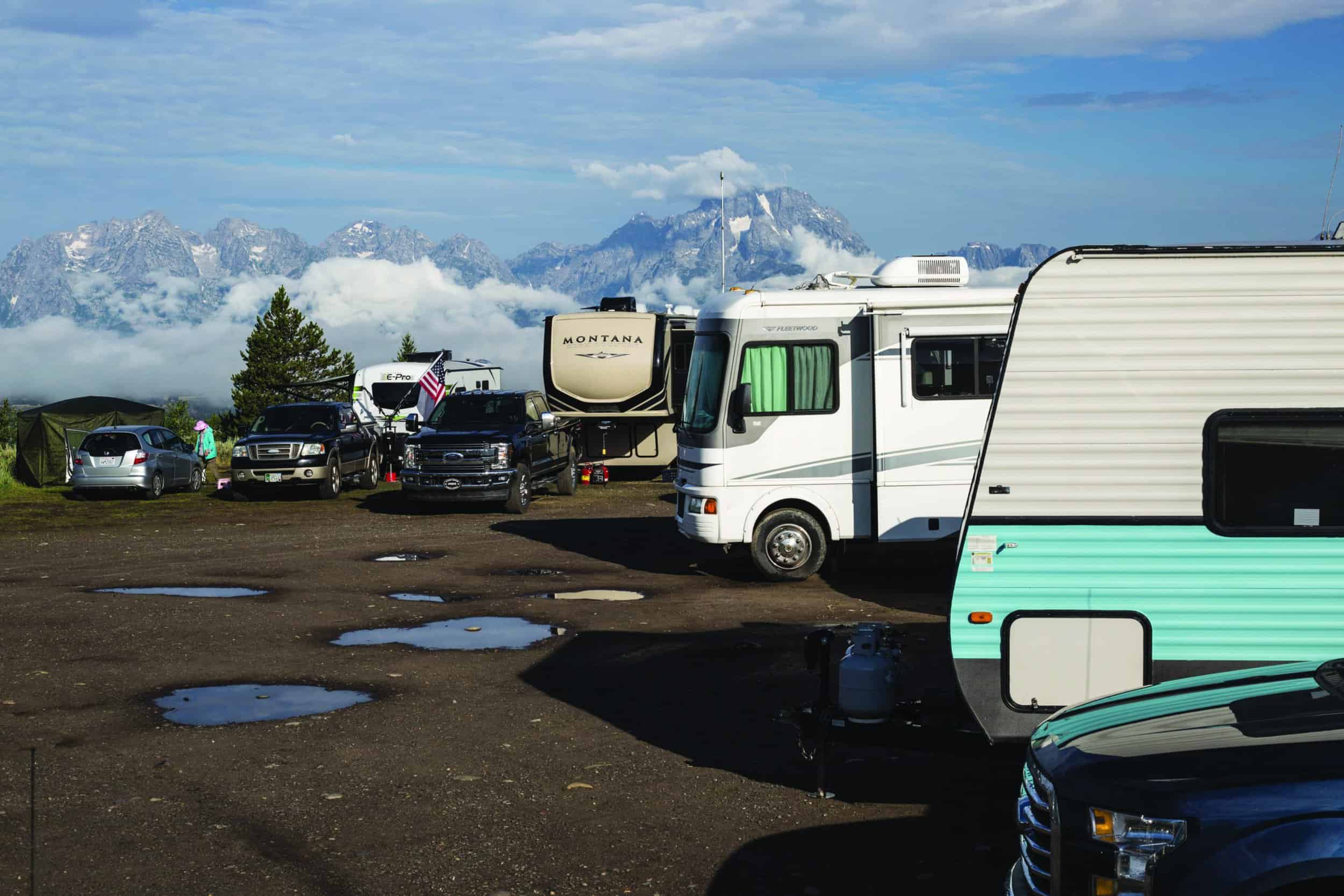
Loving a place to death has been talked about for decades, but in the past several years, it’s been making front-page news. In 2018, overtourism was one of the Oxford English Dictionary’s Words of the Year. Examples of over-touristed destinations? Venice, Amsterdam, Dubrovnik—and Jackson Hole.
The summer of 2020 brought many of this valley’s overtourism issues into sharp focus. Despite—or perhaps because of—the pandemic, Jackson Hole, the Bridger-Teton National Forest, and Grand Teton and Yellowstone National Parks were busier than ever. Yellowstone visitation in July and August 2020 was up over the same months in 2019 by, respectively, 2 percent and 7.5 percent. (August 2020 was the second-busiest August ever in Yellowstone). Last summer’s high visitation numbers were despite the absence of large tour groups and with the park operating at less than full capacity—staffing, lodging, and services were all reduced due to Covid-19. Grand Teton National Park (GTNP) witnessed similar increases in August visitation, and also in hiking trail use (up 26 percent over August 2019) and campground occupancy (up 13 percent over August 2019). The increase in visitors was even more substantial in both parks in the fall: Last October, 110 percent more visitors came to Yellowstone than did in October 2019; in October 2020 in GTNP, there was 88 percent more visitors than the same month the prior year.
Jackson Hole will never be truly sustainable. Humans are not sustainable, but that shouldn’t discourage us from being as sustainable as we can be.
TIM O’DONOGHUE, FOUNDER, RIVERWIND FOUNDATION
Negative impacts of this increased visitation were everywhere and included fires left unattended in campsites, parking lots at popular destinations reaching capacity by 8 a.m. forcing overflow onto roadways, human feces and toilet paper deposited behind trees and under rocks (or sometimes not deposited behind anything and in plain view of trails and campsites), and traffic that transformed the seven-mile, fifteen-minute drive from downtown Jackson to Wilson into an hour-long endeavor. These problems weren’t new last summer, but they were more ubiquitous. Jackson Hole felt overwhelmed by people.
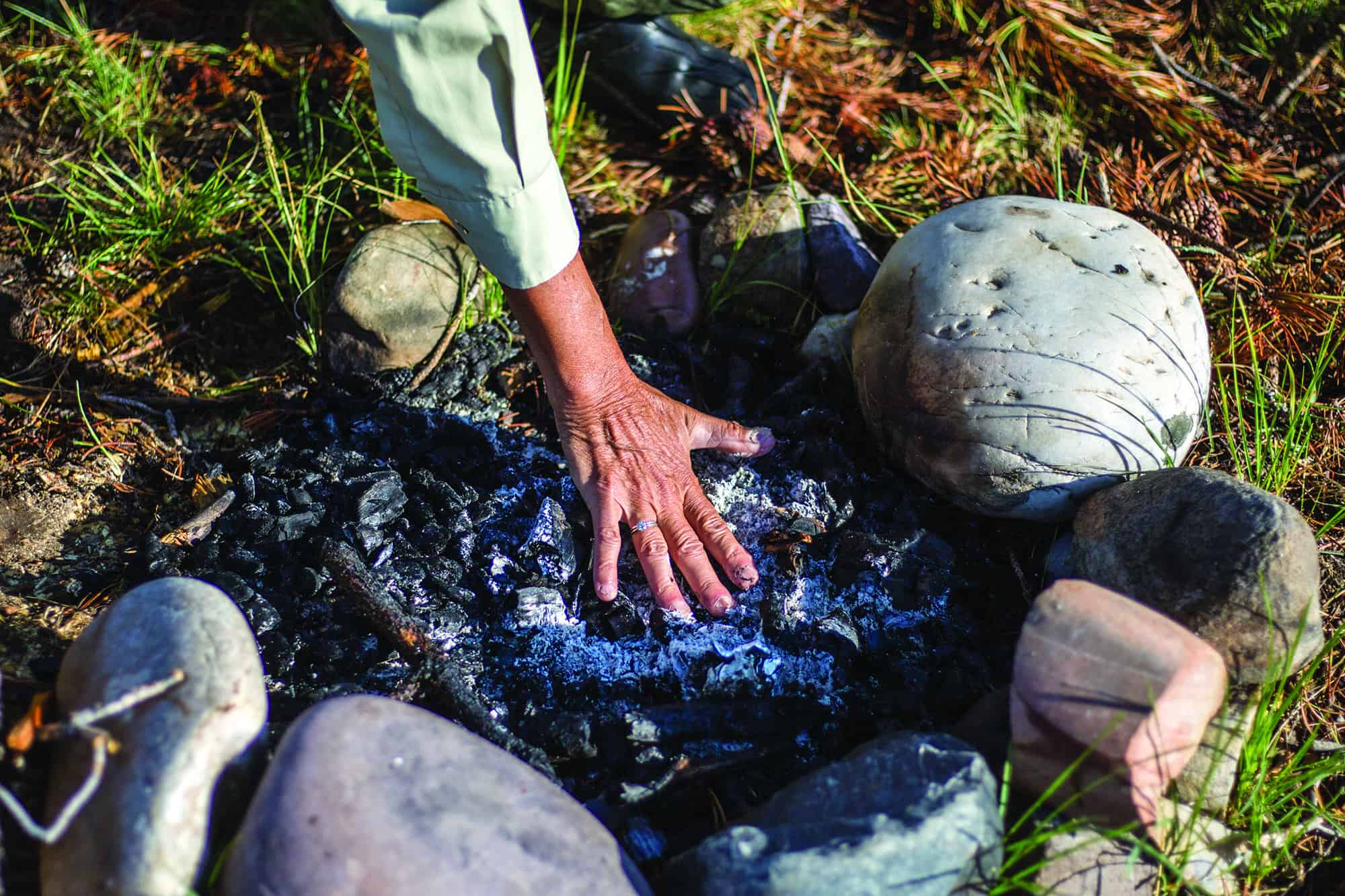
Of course, Jackson Hole is not alone. Many popular destinations are struggling with the impact of overtourism. In just twenty years, the number of annual tourists visiting Machu Picchu in Peru has grown from less than 400,000 in the year 2000 to more than 1.5 million in 2018. In 2018, 2.3 million visitors traveled to Iceland—more than six visitors for every citizen and a dramatic increase from 2000, when only 300,000 tourists vacationed on the island nation. The list of such examples goes on and on.
The global pandemic temporarily eased the tourist burden in some parts of the world. However, for places like Jackson Hole—a drive-to destination for Americans where the main attraction is the outdoors—Covid-19 increased the pressure and put the valley in a catch-22 situation: The local economy depends on tourism, yet overtourism threatens the things—the natural world and wild experience—valley residents prize and that draw visitors.
However, there is hope.
The concept of responsible tourism is gaining traction throughout the world, and a growing number of popular destinations are working to implement new policies to help lessen the negative impacts of visitors on the community, the climate, and the environment. Hallstatt, Austria, a picture-perfect alpine village with a population of 780 that received as many as 10,000 visitors per day during the summer of 2019, is now requiring tour buses to register in advance to limit numbers, giving preference to groups that stay overnight (this limit was imposed prior to the pandemic). Dubrovnik, the Croatian city that was the filming location for King’s Landing in Game of Thrones, began to limit the number of cruise ships allowed to dock at its harbors (this change was also made prior to Covid-19), and, in 2017, Machu Picchu began requiring visitors to enter with a guide in groups of sixteen or less at specific times of day in order to reduce overcrowding. Visitors to Machu Picchu are also no longer allowed to wander freely through the ruins, but instead must stick to defined routes and stay for only a limited amount of time. Jackson businesses, nonprofits, land managers, and political leaders are also working hard to make tourism here more sustainable.
Teton County, more than any other place in the world, has the potential to become a leader as a sustainable destination.
GLOBAL SUSTAINABLE TOURISM COUNCIL
In 2020, Jackson Hole became the first place in North America to be accredited as a sustainable destination by EarthCheck, an independent nonprofit founded in 1987 that today is one of only two certification programs in the world accredited by the Global Sustainable Tourism Council (GSTC) to assess destination sustainability. Many Jackson businesses have taken steps—starting with ones that are easiest to implement and measure—toward sustainability: reducing consumption, limiting emissions, cutting waste, and using local products. While the effects of such changes are important and should not be underestimated, the summer of 2020 illustrated that the biggest challenge for the future of tourism in Jackson Hole is the number of tourists. A community can implement the best green practices in the world, but if there are too many people in too small a place, these practices can’t mitigate the damage caused by sheer numbers.
“As I’ve come to see it, in the 250 years since the Industrial Revolution, no community or region has developed a post-industrial economy without compromising its ecology,” says Jonathan Schecter, who serves on the Jackson Town Council and is the head of the Charture Institute of Jackson Hole, a think tank focused on growth, change, and sustainability. “We have no roadmap to follow to do this right. It’s not as if people are out to kill the environment, but somehow the result of what we are doing is killing it.”
“This community spent five or six years coming up with its mission in the comprehensive plan. It’s a statement that seems to capture the essence of what we want as a community—to preserve and protect the ecosystem,” Schechter says. The mission Schechter refers to is from the 2012 Joint Comprehensive Plan adopted by the town of Jackson and Teton County. It states that the vision of the community is “to preserve and protect the area’s ecosystem in order to ensure a healthy environment, community, and economy for current and future generations.” However, Schechter says: “But, the question of what we are doing to achieve this mission? The answer is, not much. Sad but true.”
What is “Responsible Tourism?”
According to sustainabletourism.net, a website run by Sustaining Tourism—a consulting firm dedicated to helping communities limit the negative impacts of tourism—responsible tourism is tourism that focuses on minimizing the social, economic, cultural, and environmental impacts of travel by:
• Ensuring tourism is beneficial to host communities.
• Following practices that are culturally sensitive and encourage respect between tourists and their hosts.
• Making positive contributions to the conservation of a host community’s natural and cultural heritage.
• Providing meaningful connections between visitors and locals, including creating a greater understanding of environmental and social issues.
In 2018, the government of Iceland felt the need to temporarily close one of the island’s iconic canyons—Fjadrargljufur—to visitors until infrastructure like trails and viewing platforms could be built and fortified. This canyon was off the usual tourist track until 2015 when pop star Justin Bieber released a music video for “I’ll Show You,” parts of which were filmed there. The video received 440 million views and, over the following three years, visitation to Fjadrargljufur increased 50 to 80 percent, leading to severe damage to vegetation in the area. The canyon reopened in 2019, but the government has said that it could be closed again if visitors behave badly and further damage the area.
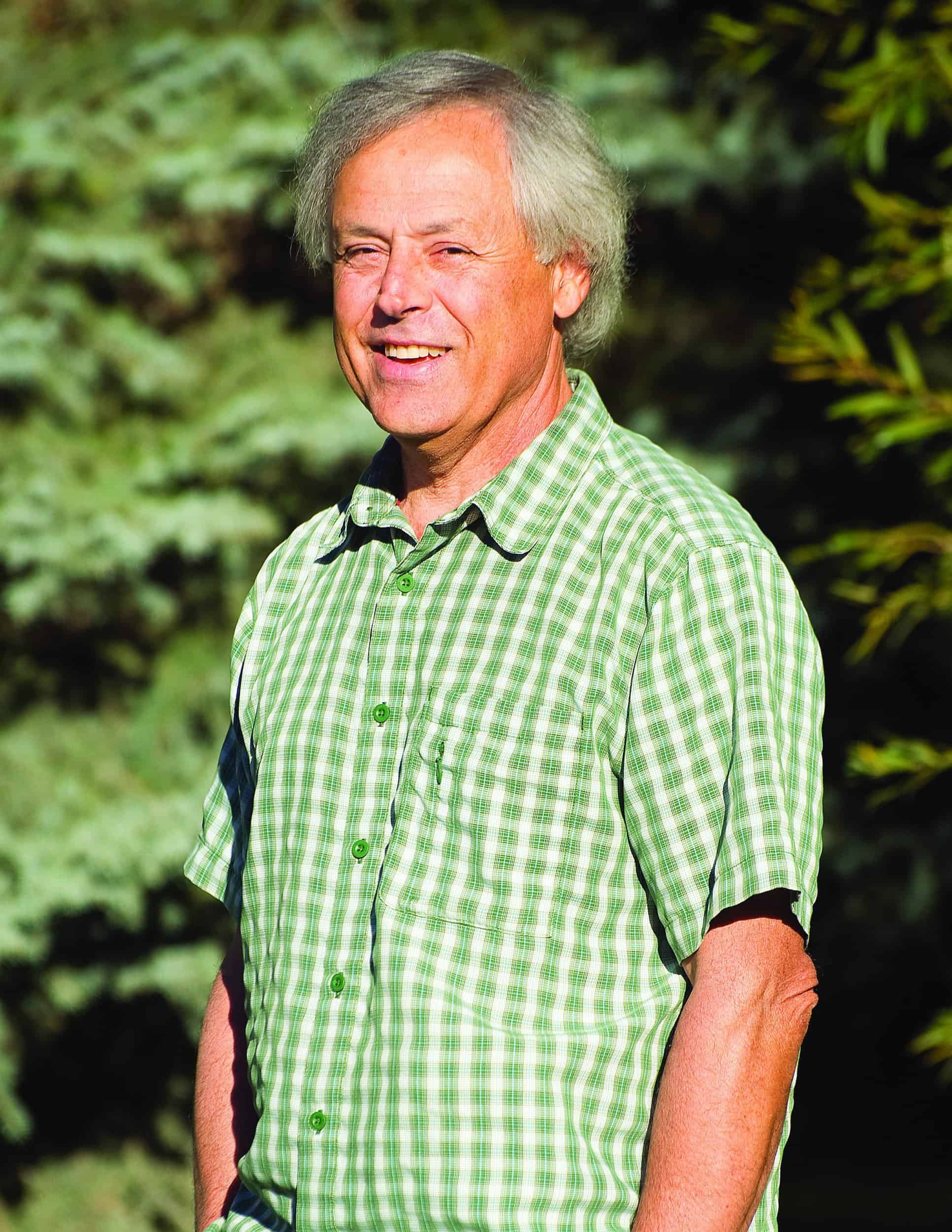
A Local Making a Difference
If you ask anyone who to talk to about responsible tourism in Jackson Hole, they will tell you to start with Tim O’Donoghue, founder and executive director of the Riverwind Foundation. Interested in sustainability, energy use, and finding ways to live that were less harmful to the planet and its inhabitants since he was a kid, O’Donoghue moved to Jackson in the 1990s and started the Riverwind Foundation in 1999. The non-profit foundation taught workshops on deep ecology, living simply, and sustainability. In 2006, he put Riverwind temporarily in mothballs to assume the role of executive director at the Jackson Hole Chamber of Commerce. He served in this role until 2012 and never lost sight of his dream of living lightly on the planet. He focused the chamber’s work on the “triple bottom line,” which considers the health of the economy, the community, and the environment. (While O’Donoghue is no longer at the chamber, the triple bottom line continues to direct the group’s work today.)
O’Donoghue revived Riverwind in 2012, and, by 2014, the non-profit was a major reason Jackson Hole received its first global sustainable-destination recognition. “Since 2012, our program keeps getting stronger, but the majority of the work still needs to be done. Riverwind gives people and businesses an opportunity to be engaged, to do something that helps us get from where we are to where we want to be,” O’Donoghue says. “Riverwind plays matchmaker to bring organizations and resources together instead of having all of us working alone to our own ends.”
Responsible vs. Sustainable Tourism
While the terms responsible and sustainable tourism are often used interchangeably, there are subtle differences. Sustainable tourism—or tourism that does not degrade a destination’s environment or culture and has a minimal impact on the health of the planet—is the ultimate goal; responsible tourism is the path followed to achieve that goal.
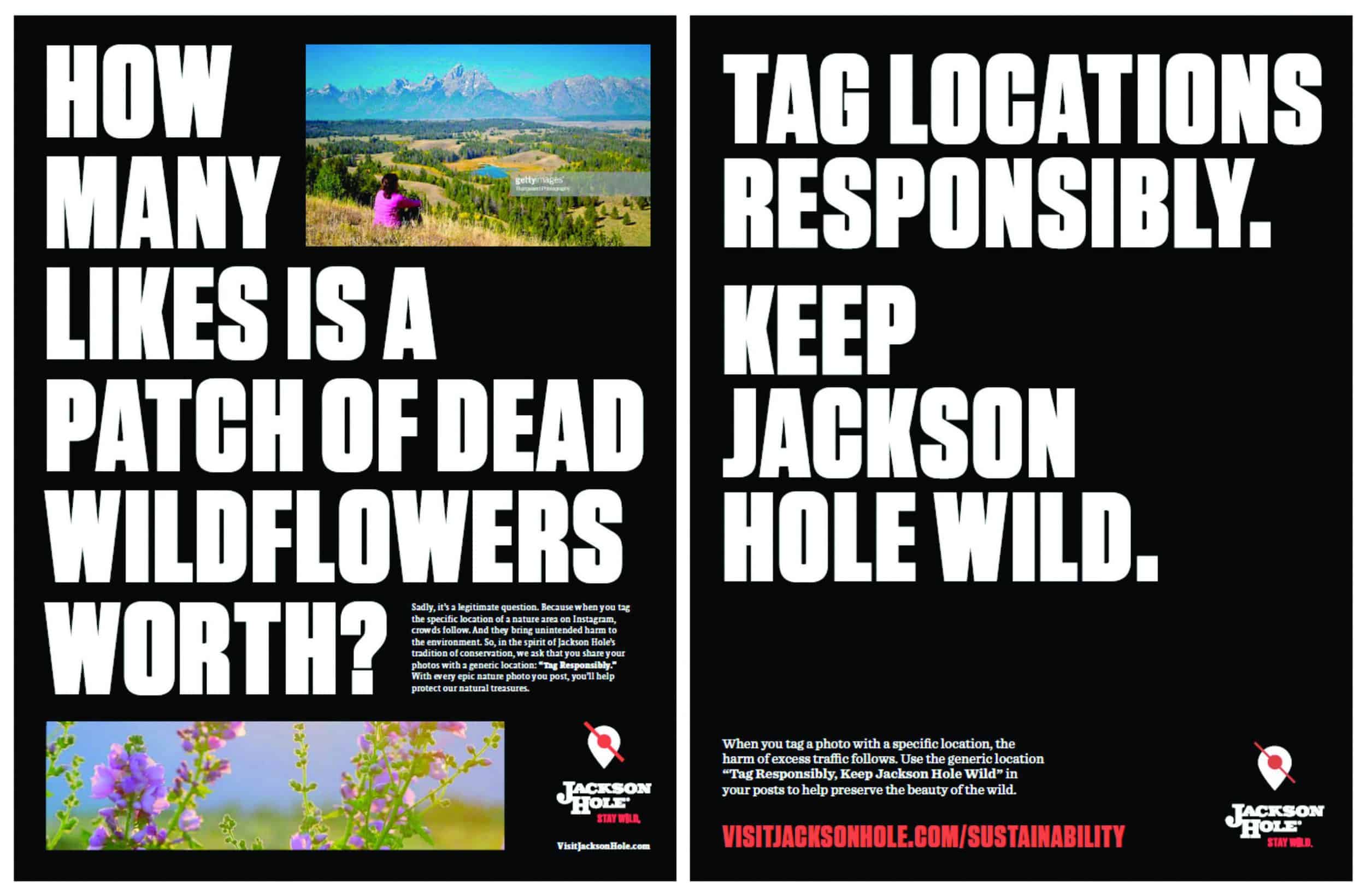
Sustainability Efforts in jackson hole
• All Jackson Hole Airport facilities run on 100 percent green power.
• Jackson Hole Airport rents bear spray and has a bear spray recycling program to save on waste and unused product.
• Grand Teton Lodge Company (GTLC) has collaborated with Haderlie Farms, Teton County Integrated Solid Waste and Recycling, the National Park Service, Subaru of America, National Parks Conservation Association, West Bank Sanitation, and Signal Mountain Lodge to bring commercial-scale food-waste composting to Jackson Hole. GTLC’s composting operation is the largest in the valley, and, since the summer of 2018, the company has composted roughly 360 tons, or 720,000 pounds, of food waste.
• Yellowstone National Park Lodges/Xanterra have committed to reducing their carbon footprint 50 percent by 2025. Already the concessionaire has added solar arrays, recycling and composting programs, and energy- and water-efficiency projects, and is purchasing carbon offsets from ranches in Montana where science-based grazing practices are being used to protect grasslands. (Research indicates this may actually be more effective than forests at sequestering carbon dioxide.) To further connect the dots, Xanterra purchases much of the beef used in its Yellowstone restaurants from ranches participating in the carbon-offset program.
• Eight local businesses—Elk Refuge Inn, GTLC, Flat Creek Ranch, Jackson Hole Chamber of Commerce, Jackson Hole Airport, Jackson Hole Wildlife Safaris, Yellowstone National Park Lodges/Xanterra, and Signal Mountain Lodge—have earned the Jackson Hole Best Certification in recognition of their sustainable business practices. Best Certification, which is administered by the Riverwind Foundation, is a six-month audit that tracks and monitors a business’ energy usage, fuel consumption, vehicle miles, waste production, and water use to promote efficiency, reduce consumption, and minimize impacts.
• The Jackson Hole Travel and Tourism Board (JHTTB) created the “Tag Responsibly, Keep Jackson Hole Wild” campaign to educate visitors on responsible geotagging after noticeable increases in visitation at specific destinations in the area were linked to geotagged Instagram posts. (This campaign has been picked up by other communities around the country.)
• Bridger-Teton National Forest and Friends of the Bridger-Teton, with support from the JHTTB, have collaborated on a series of videos that show visitors how to recreate responsibly in the forest. JH

